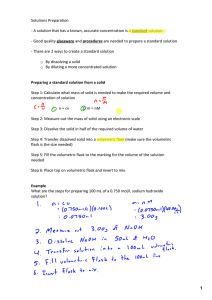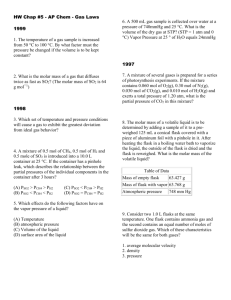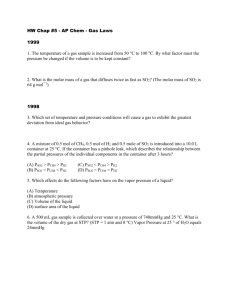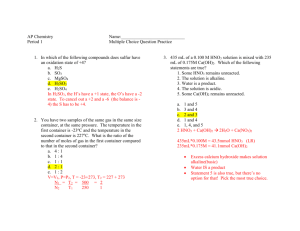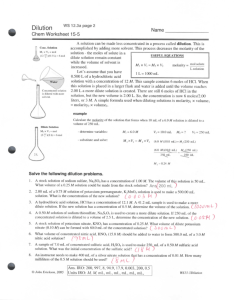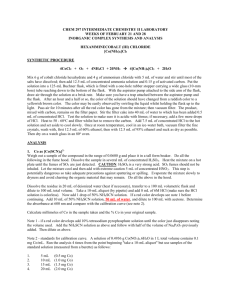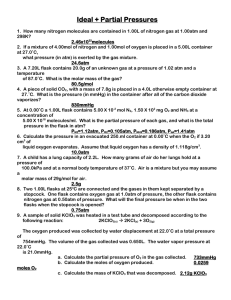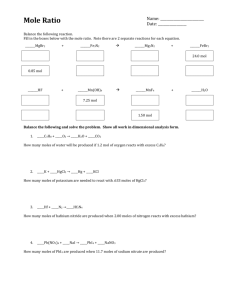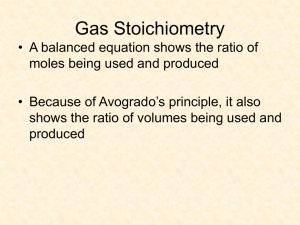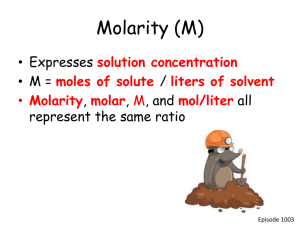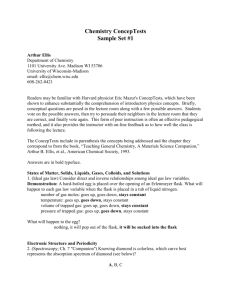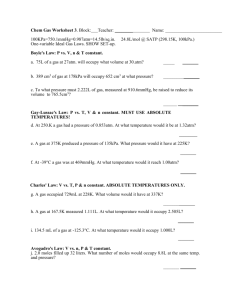Diluting a Solution
advertisement
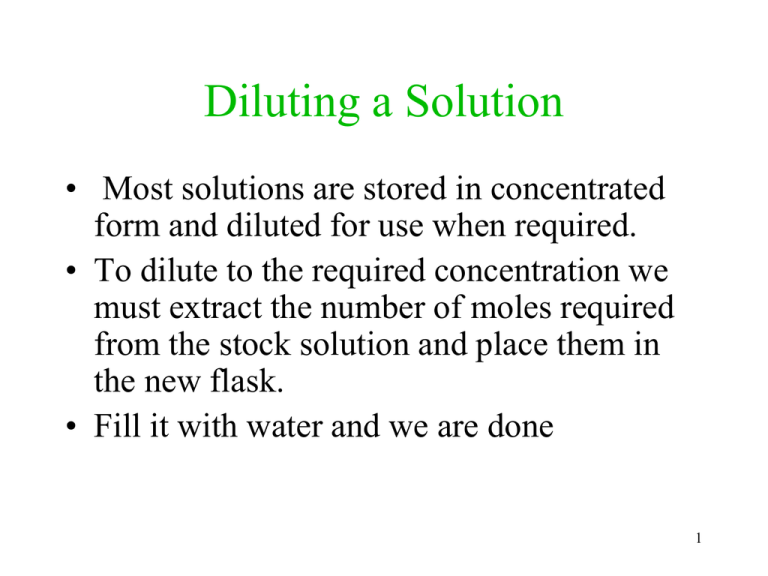
Diluting a Solution • Most solutions are stored in concentrated form and diluted for use when required. • To dilute to the required concentration we must extract the number of moles required from the stock solution and place them in the new flask. • Fill it with water and we are done 1 • The number of moles does not change when you dilute the solution, therefore: • Since n = Cv in both beakers, we can write the relationship as : • Civi = Cfvf Ci = Concentration of the initial solution vi = volume of the initial solution Cf = Concentration of the final solution vf = volume of the final solution 2 EXAMPLE 1 • What volume of 12.4 mol/L hydrochloric acid is required to prepare 2.00 L of 0.250 mol/L solution.- note: whenever you want to prepare something, this will be a final concentration or volume 3 ANSWER Civi = Cfvf 12.4 M (v) = 2.00 L x 0.250 M v= (2.00L) x (0.250M/12.4M) v = 0.0403 L or 40.3 mL 4 EXAMPLE 2 • What is the concentration of the diluted acetic acid if 200 mL of 17.4 M is pipette into a 500 mL flask and brought up to the full volume? 5 ANSWER #2 Civi = Cfvf (note:200mL=0.200L) 17.4 M x 0.200 L = Cf x 0.500 L Cf = 6.96 M 6



